Charts of the Week
Charts of the week from 3 to 7 July 2023: trade in goods, number of registered unemployed persons, natural gas consumption and other charts
Trade in goods continued to decline in May and remained lower year-on-year. Real imports of goods also continued to decline, with imports of intermediate goods and consumer goods in particular declining significantly in recent months. After several months of decline, real exports of goods increased, mainly due to an increase in exports to non-EU countries. Amid weak activity in Slovenia’s main trading partners, expectations for export orders fell further in June, to the lowest level since August 2020. Gas consumption in June was slightly higher than the comparable average consumption in previous years, while electricity consumption remained significantly lower year-on-year. At the end of June, the number of registered unemployed (46,187 persons) was at an all-time low and 14.3% lower than a year earlier. The yield to maturity of the Slovenian bond fell to 3.28% in the second quarter.
Trade in goods – in real terms, May 2023
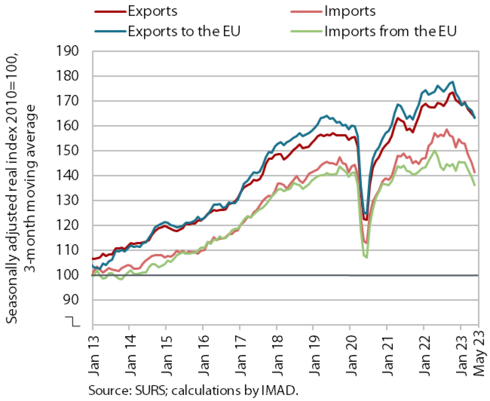
Trade in goods continued to decline in May and remained lower year-on-year; sentiment in export-oriented activities is low. Real imports of goods continued to decline in May, with imports of intermediate goods and consumer goods (seasonally adjusted) in particular declining significantly in recent months. Real goods exports increased slightly in May (after several months of decline), mainly due to an increase in exports to non-EU countries (seasonally adjusted). Exports to EU Member States, which account for around 75% of all Slovenian goods exports, remained at a similar level to that in April, while exports to Italy and Austria in particular have been declining since the beginning of the year. Compared to the same period last year, trade in goods (also with EU Member States) was lower in the first five months of the year (exports by 2.5% and imports by 6.8%). The weak economic activity in Slovenia’s main trading partners is having a negative impact on sentiment and expectations in export-oriented activities. Thus, expectations for export orders fell in June, to the lowest level since August 2020.
Number of registered unemployed persons, June 2023
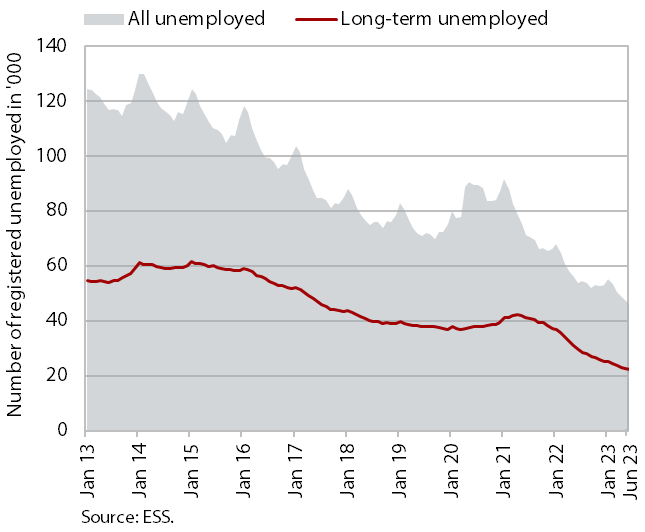
The number of registered unemployed was at an all-time low in June. According to original data, 46,187 people were unemployed at the end of June, 2.1% fewer than at the end of May and 14.3% fewer than a year earlier. According to seasonally adjusted data, the monthly decrease (-0.7%) was slightly lower than in previous months, but still relatively high. Amid severe labour shortages, the number of long-term unemployed fell by one-quarter year-on-year at the end of June and the number of unemployed people over 50 by 14.5%.
Natural gas consumption, June 2023
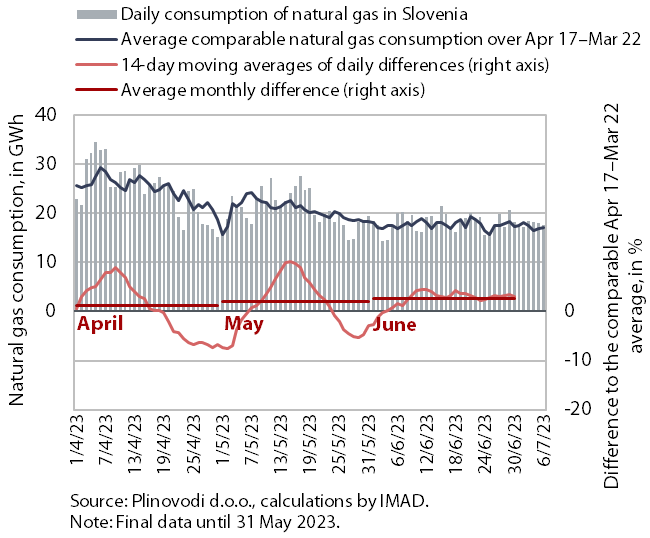
For the third month in a row, natural gas consumption in June was slightly higher than the comparable average consumption in previous years. The higher consumption in recent months was due to cooler temperatures that extended the heating season (in April), and lower gas market prices compared to the same period last year, which prompted some companies to increase their production (e.g. in the steel industry). Slovenia almost reached the EU target of reducing gas consumption by at least 15% between August last year and March this year (-14%). In the first three months of the extended gas demand reduction period, gas consumption in Slovenia was slightly above the comparable average consumption (by almost 3% in June). According to Eurostat, EU Member States reduced their gas consumption by an average of 13% in April–May (Slovenia increased it by 1%).
Electricity consumption, June 2023
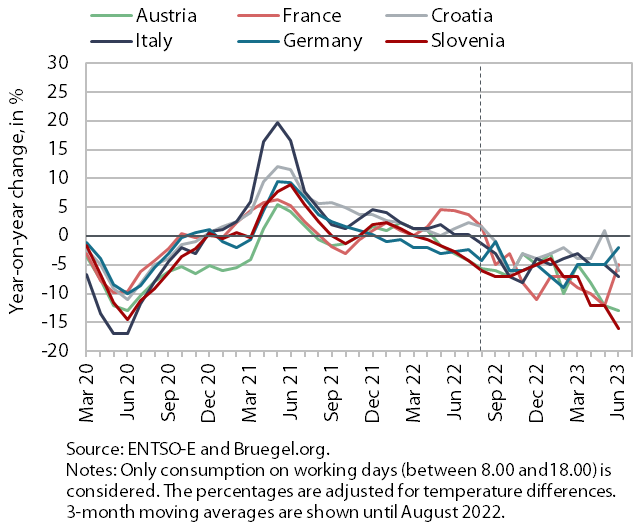
Electricity consumption was 16% lower year-on-year in June. According to our estimate, this was mainly due to lower industrial consumption, especially in the energy-intensive part of industry. Household consumption may also have contributed to lower year-on-year consumption as a result of more rational utilisation of energy. Slovenia’s main trading partners also recorded a year-on-year decline in consumption in June (Austria by 13%, Italy by 7%, Croatia by 6%, France by 5%, and Germany by 2%).
Bond, Q2 2023
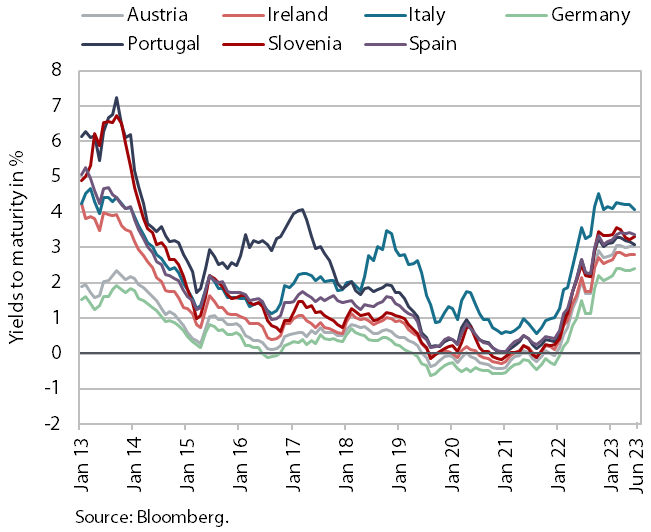
After rising since the end of 2021, yields to maturity of euro area government bonds fluctuated in the second quarter of this year. The yield to maturity of the Slovenian bond fell to 3.28% in the second quarter (from 3.48% in the first quarter). The spread to the German bond fell quarter-on-quarter for the second time in a row, by 23 basis points (to 91 basis points).
